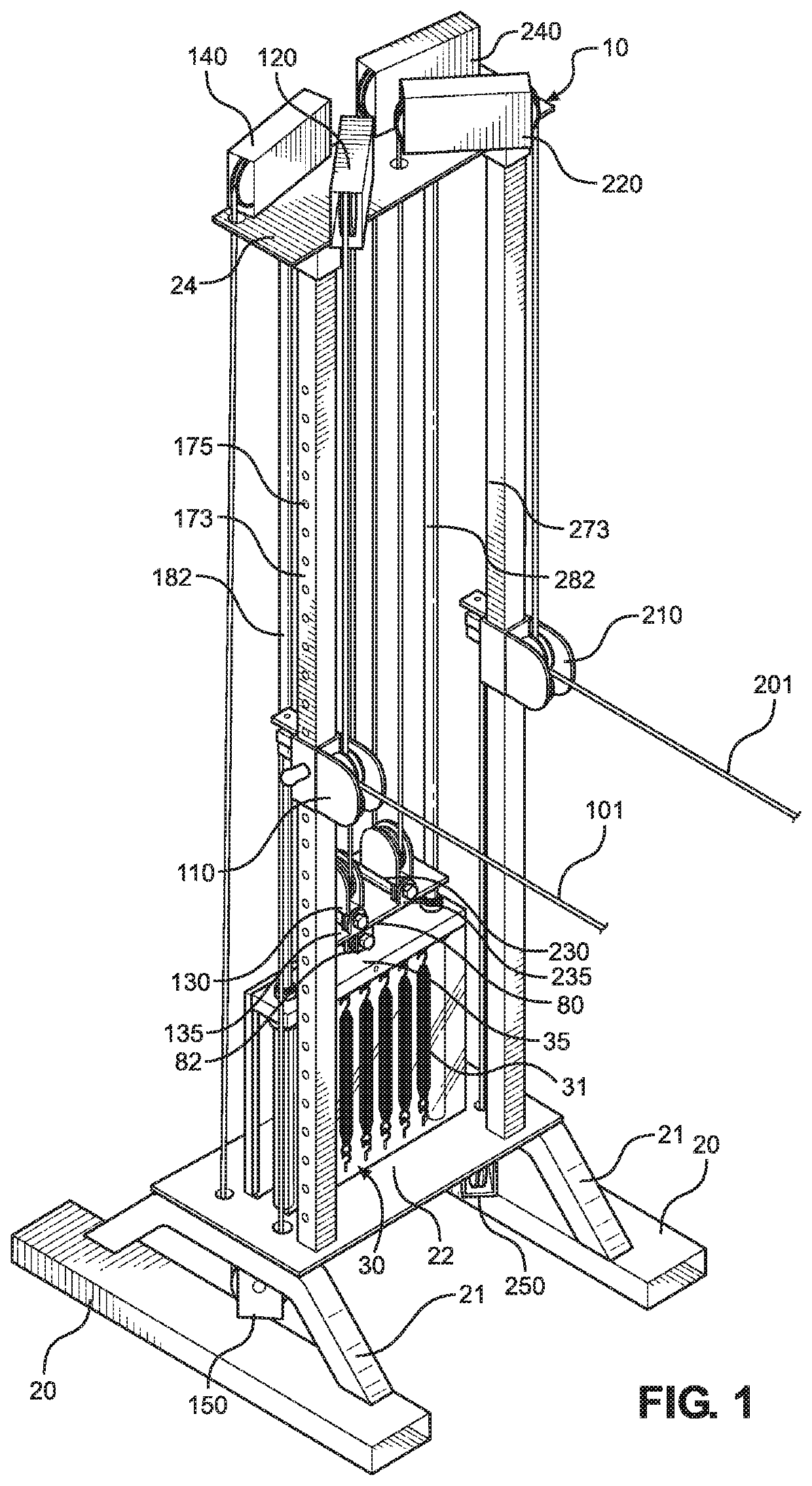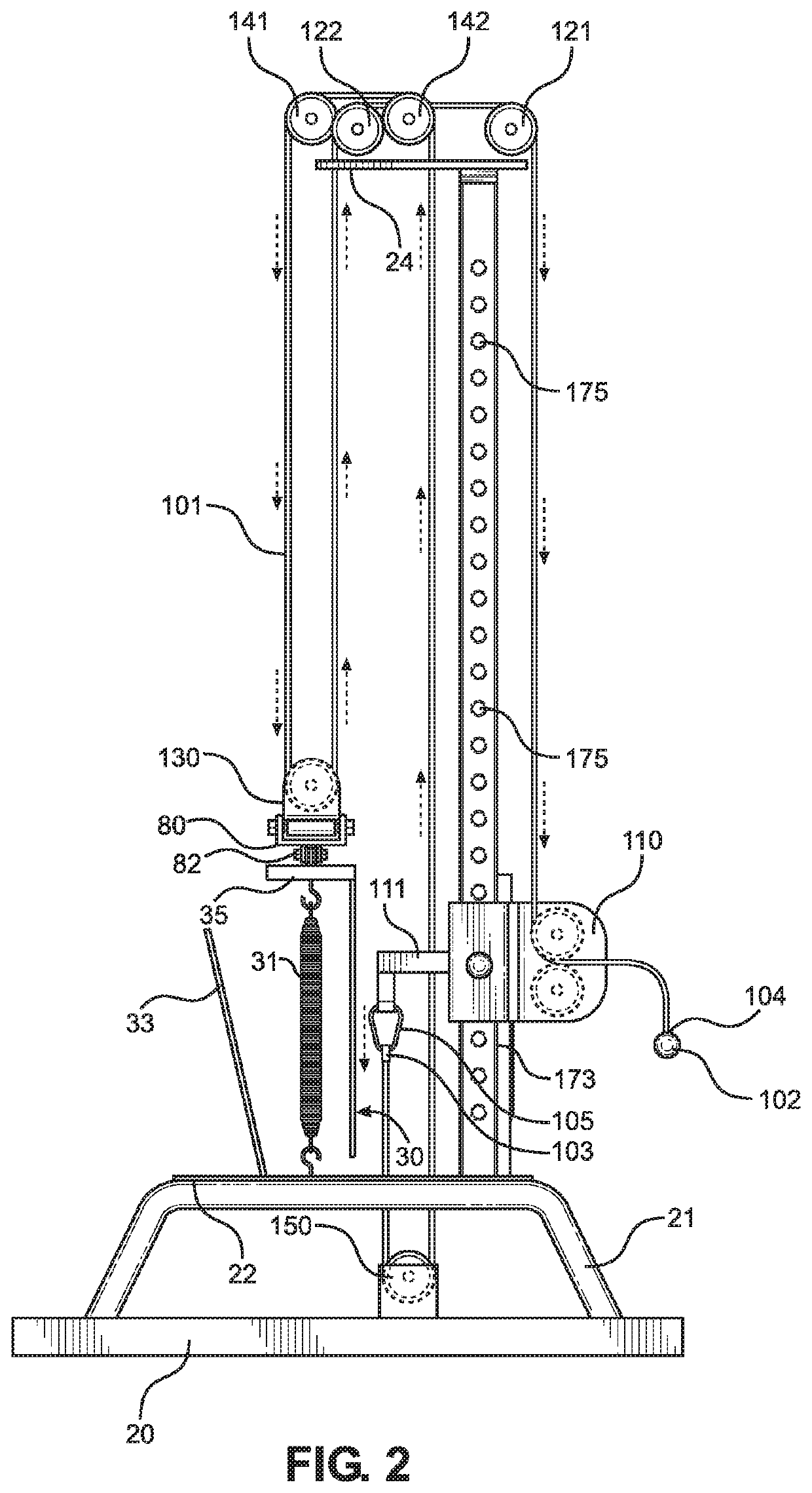Dual Balance Spring Tower Apparatus and Method of Using Same
a technology of double-walled apparatus and spring tower, which is applied in the direction of sports apparatus, gymnastic exercise, muscle exercise devices, etc., can solve the problems of not being able to use the exercise machine from a standing position with feet planted on the floor, not being able to transfer as well to real-life movements done from a standing position, and single spring resistance (one for each limb) is not suitable for all of the different strength, so as to improve the responsiveness and the effect of enhancing
- Summary
- Abstract
- Description
- Claims
- Application Information
AI Technical Summary
Benefits of technology
Problems solved by technology
Method used
Image
Examples
Embodiment Construction
[0050]FIG. 1 depicts a side perspective view of exercise assembly 10 equipped with the dual balance system of the present invention. In a preferred embodiment, the present invention includes a base assembly comprising lower base members 20, parallel base support members 21, and lower frame support member 22 extending between said base support members 21. Said base assembly should beneficially provide a stable and secure foundation for exercise assembly 10, particularly during exercise performance by a user.
[0051]Left vertical frame column member 173 and right vertical frame column member 273 extend upward from said base assembly. In a preferred embodiment, said vertical frame column members 173 and 273 are oriented substantially vertically and parallel to each other. Further, each of said vertical frame column members 173 and 273 can include a plurality of space-apart transverse bores 175 and 275, respectively; said bores 175 and 275 are beneficially spaced apart at desired interval...
PUM
 Login to View More
Login to View More Abstract
Description
Claims
Application Information
 Login to View More
Login to View More - R&D
- Intellectual Property
- Life Sciences
- Materials
- Tech Scout
- Unparalleled Data Quality
- Higher Quality Content
- 60% Fewer Hallucinations
Browse by: Latest US Patents, China's latest patents, Technical Efficacy Thesaurus, Application Domain, Technology Topic, Popular Technical Reports.
© 2025 PatSnap. All rights reserved.Legal|Privacy policy|Modern Slavery Act Transparency Statement|Sitemap|About US| Contact US: help@patsnap.com



